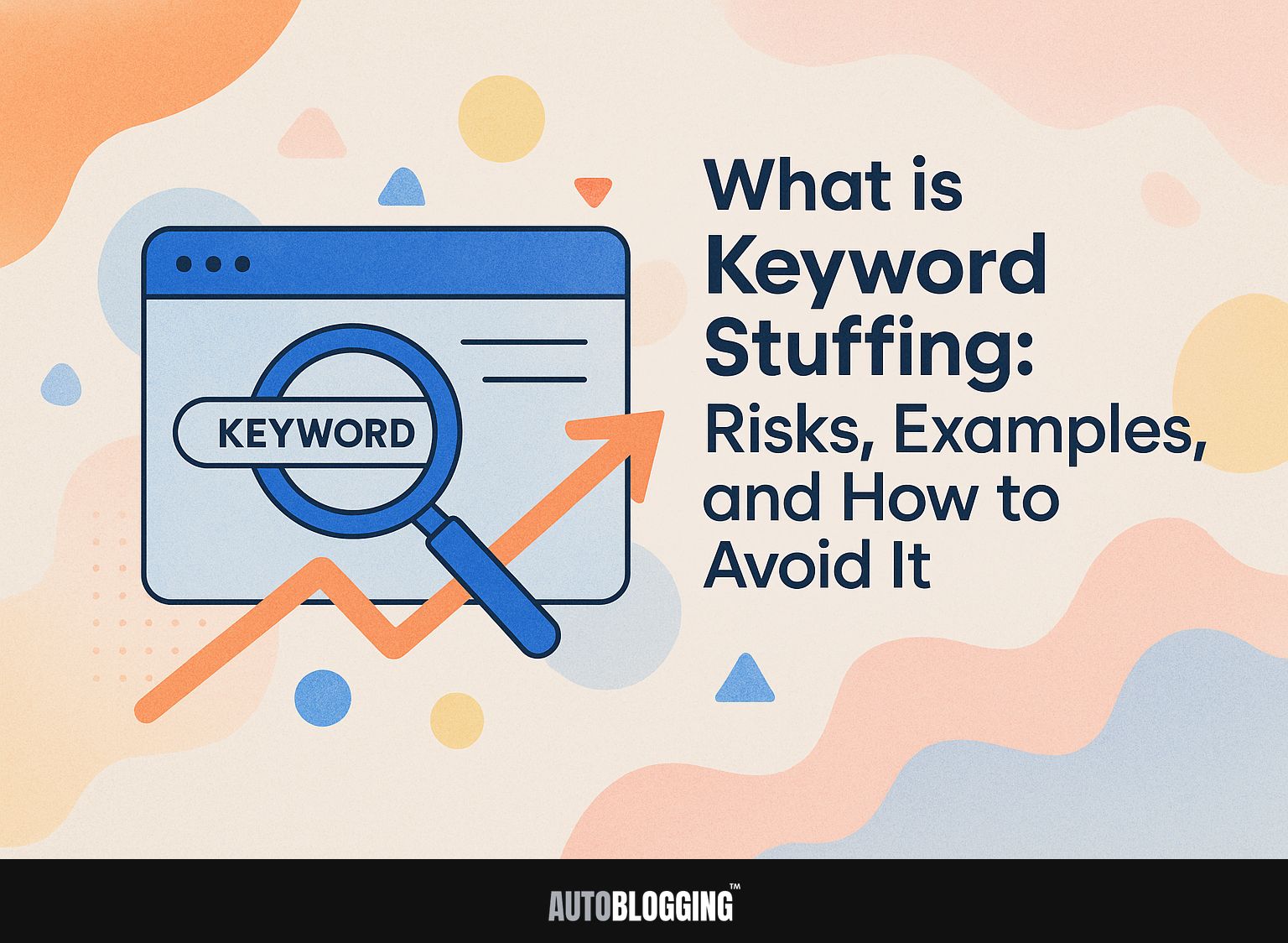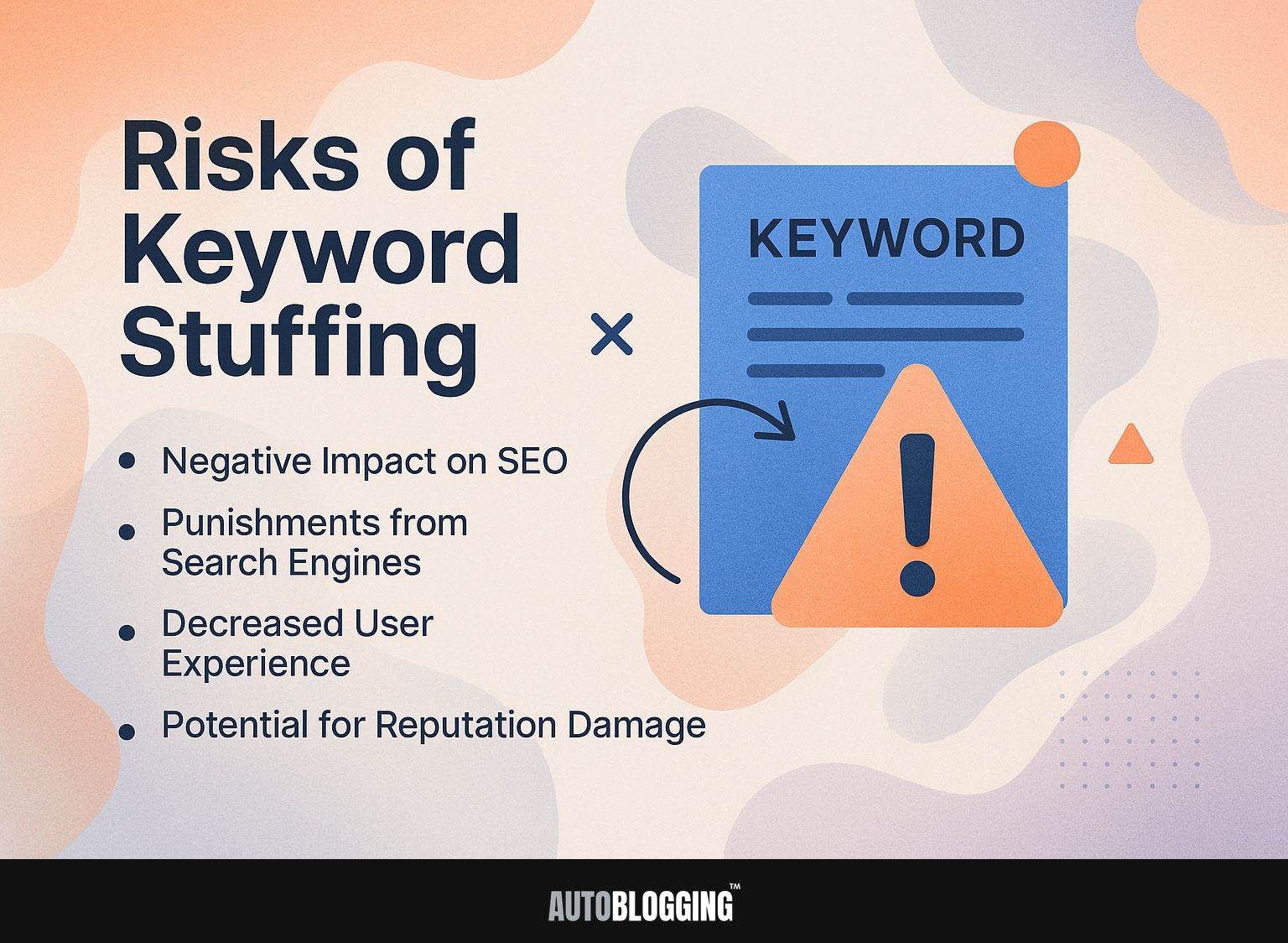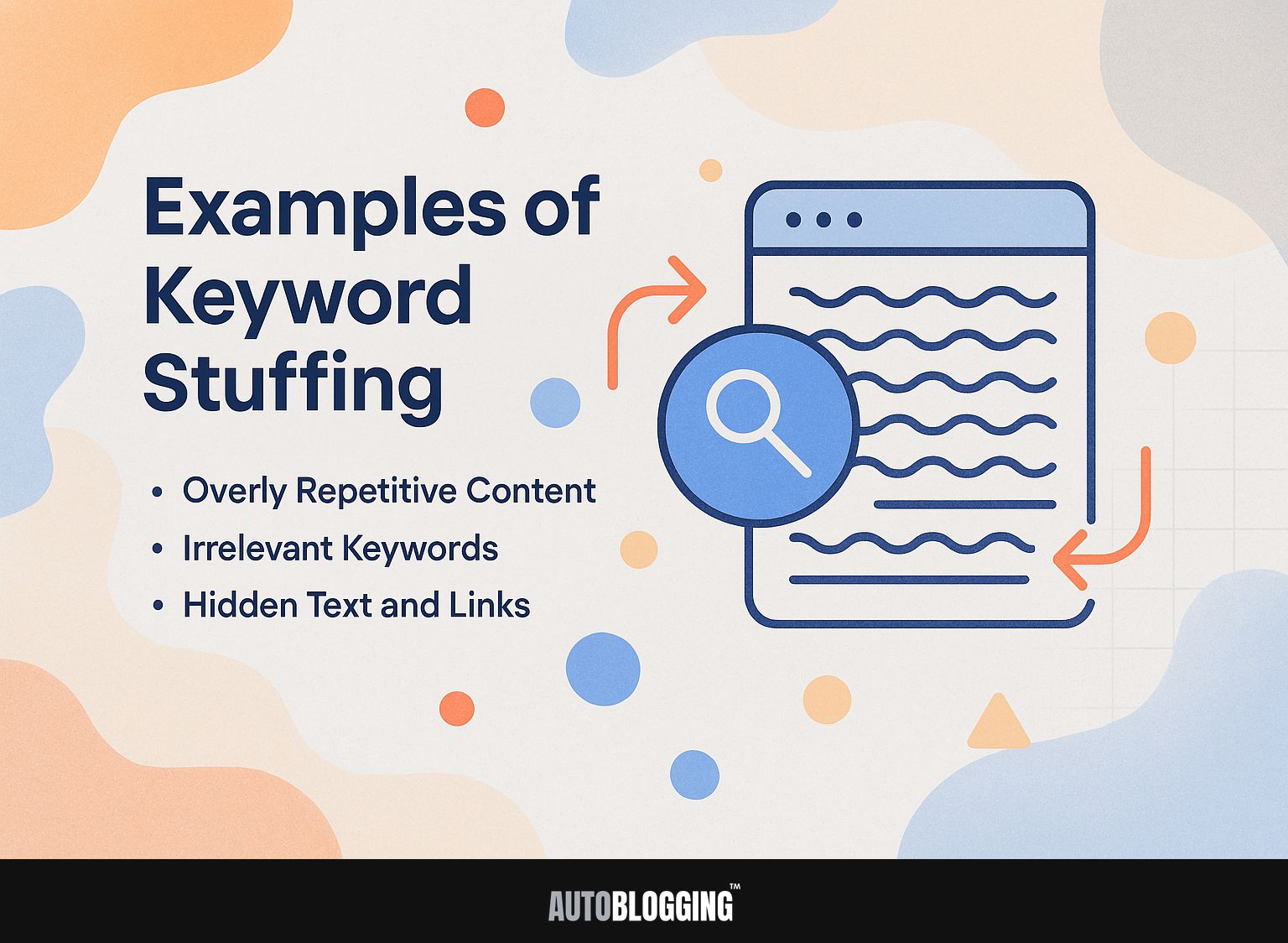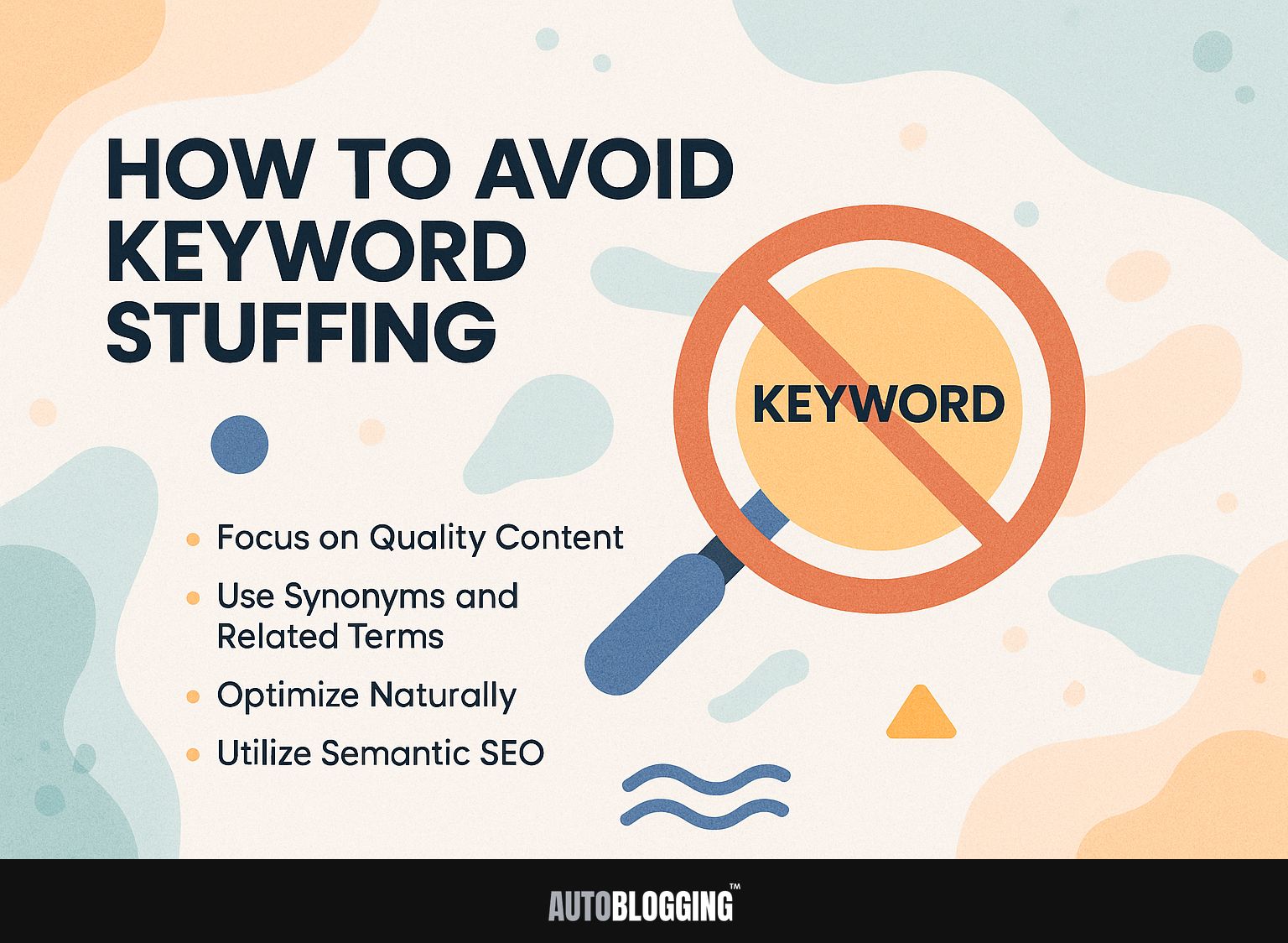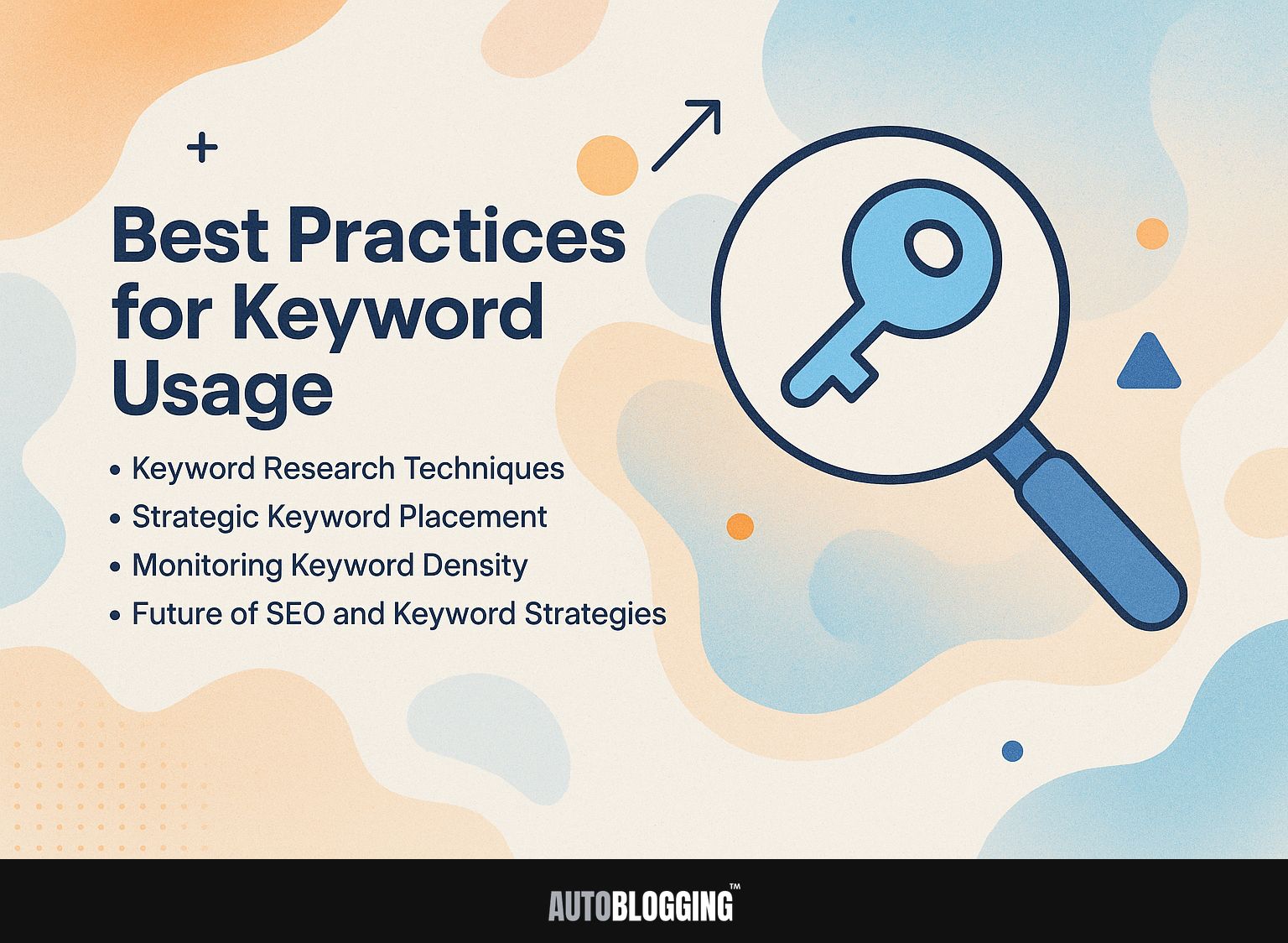Keyword stuffing can jeopardize your SEO tactics and harm your website’s visibility. As search engines like Google evolve, they increasingly prioritize user experience over outdated practices. This article examines the dangers of using too many keywords, gives examples from real situations, and shares practical steps to avoid getting penalized. Whether you use WordPress or another platform, knowing keyword best practices is important for keeping a strong online presence. Learn how to make your content better!
Key Takeaways:
- Using too many keywords can lead to serious problems such as lower search engine rankings, penalties from search engines, worse user experience, and possible harm to your reputation.
- Examples of keyword stuffing include overly repetitive content, irrelevant keywords, and hidden text and links.
- To prevent overusing keywords, prioritize good content, use synonyms and related words, write in a natural way, and apply semantic SEO. Always use keywords effectively by researching them well, placing them in the right spots, and checking how often they appear.
Contents
- Risks of Keyword Stuffing
- Examples of Keyword Stuffing
- How to Avoid Keyword Stuffing
- Best Practices for Keyword Usage
- Additional Resources
- Frequently Asked Questions
- 1. What is Keyword Stuffing and Why is it a Risk?
- 2. Can You Provide Examples of Keyword Stuffing?
- 3. What Are the Risks of Keyword Stuffing for My Website?
- 4. How Can I Avoid Keyword Stuffing on My Website?
- 5. Is There an Alternative to Keyword Stuffing for Improving SEO?
- 6. What Should I Do if My Website Has Been Penalized for Keyword Stuffing?
1. Definition of Keyword Stuffing
Keyword stuffing is defined as the practice of excessively repeating keywords in a webpage’s content, meta tags, or alt attributes to improve search visibility.
This tactic often appears as unnaturally dense phrases, such as ‘Best running shoes running shoes for running shoes enthusiasts,’ or through repetitive usage in meta descriptions and headings.
While the intent is to rank higher in search results, search engines like Google penalize this practice, leading to lower rankings and a poor user experience.
Instead, include keywords naturally by using related words and synonyms. This keeps your content interesting and helpful for readers.
2. History and Evolution
Keyword stuffing was common in the 1990s, but as search engines changed, the penalties for using this method became harsher, especially from Google.
In 2011, Google’s Panda update marked a significant turning point, targeting sites with poor content quality and excessive keyword repetition. This change led webmasters to concentrate on making content that is helpful and pertinent, rather than simply stuffing pages with a large number of keywords.
Later updates, like Hummingbird in 2013, aimed to better interpret search terms, giving more importance to the meaning of words rather than their frequency.
Today, tools like SEMrush or Yoast SEO help content creators improve their work without overloading keywords, keeping the emphasis on user experience and genuine content instead of old-fashioned methods. See also: What is On-Page SEO: Techniques, Importance, and Best Practices
Risks of Keyword Stuffing
Using too many keywords can harm your site’s search engine ranking and reduce user interaction. If you’re interested in optimizing your content naturally, exploring what constitutes a natural link and how to earn them might be beneficial.
1. Negative Impact on SEO
Overusing keywords can lead to a drop in search engine rankings, as search algorithms penalize sites for poor SEO practices. This keyword stuffing can trigger algorithm penalties, resulting in a significant decline in organic traffic.
For example, Google’s Panda algorithm specifically targets low-quality content filled with keywords that lack relevance. Overstuffed pages may be perceived as spammy, eroding trust with search engines. This can lower your site’s trustworthiness and its ability to rank well in search results.
Instead, focus on using keywords naturally within your content, ensuring that they fit seamlessly into the overall narrative to maintain both user engagement and SEO performance.
2. Punishments from Search Engines
Search engines like Google impose strict penalties for keyword stuffing, which can result in a dramatic loss of visibility in search results. These penalties can manifest in two main ways: manual reviews or algorithmic demotions.
For instance, a recent case involved a popular e-commerce site that excessively used keywords, resulting in a manual review. This led to a six-month suspension from search results, slashing their traffic by 70%.
Algorithm-based penalties can be hard to predict. Websites may drop in ranking if automated systems detect too many keywords. It’s important to keep content easy to read while following SEO rules, such as using different forms of keywords, for lasting success.
3. Decreased User Experience
Using too many keywords can make the user experience worse, causing people to leave the site quickly and decreasing interaction levels.
When webpages cram excessive keywords into text, it often results in unnatural language that frustrates readers. For instance, sites with keyword density exceeding 5% can experience bounce rates upwards of 70%. This differs significantly from using Latent Semantic Indexing (LSI), which enhances content relevance without keyword stuffing.
Contrast this with pages maintaining 1-2% density, which tend to retain visitors better. To improve your content quality, focus on natural usage of keywords.
Tools like Yoast SEO can check how often keywords appear and offer tips to make text easier to read, helping keep readers interested in your content.
4. Potential for Reputation Damage
A website known for keyword stuffing risks damaging its reputation, leading users to distrust its content and brand. This practice annoys readers and may lead to punishments from search engines such as Google.
For instance, brands like Overstock and Stanford University faced significant backlash, losing search rankings and user trust after being caught manipulating keywords.
To avoid these mistakes, use clear content strategies that emphasize quality over quantity. Use tools like Yoast SEO to make your content better while keeping it easy to read, and focus on how users interact with it. This way, you build a loyal audience while keeping a strong online presence.
Examples of Keyword Stuffing
Seeing specific examples makes it easier to see how keyword stuffing can appear in online content.
1. Overly Repetitive Content
One common example of keyword stuffing is overly repetitive content, where the same phrase is excessively used within a single article or page. This method can badly affect SEO rankings and the user experience.
Search engines reduce the ranking of sites that overuse identical keywords, causing articles to seem like spam. Readers might find these articles difficult to engage with, leading to higher bounce rates.
To analyze your keyword usage, use tools like Yoast SEO, which can help measure keyword density and suggest alternatives. Try to keep the frequency of keywords between 1-2% to make your content clear and easy to read.
2. Irrelevant Keywords
Using irrelevant keywords that do not relate to the content is another form of keyword stuffing that can mislead users and search engines alike. This practice harms your SEO rankings and can hurt your brand’s credibility.
For example, J.C. Penney faced a Google penalty in 2011 for using misleading SEO tactics, resulting in a significant decline in site traffic. To prevent these mistakes, do detailed keyword research using tools such as Google Keyword Planner or SEMrush.
Focus on long-tail keywords that align closely with your content. Regularly review your website to check that your keywords fit what users are looking for, improving both search visibility and user experience.
3. Hidden Text and Links
Some sites employ hidden text or links to stuff keywords without user visibility, a tactic that search engines actively penalize. This unethical practice can result in serious consequences, such as being completely removed from search engine indexes.
For example, a major e-commerce site faced a drop in organic traffic by 50% after being penalized for hidden links.
To integrate keywords ethically, focus on providing value through relevant content. Use bold or italics to highlight important points and add key terms naturally in the text.
Tools like Yoast SEO can help you use keywords in a way that improves both readability and adherence to SEO rules.
How to Avoid Keyword Stuffing
To prevent overuse of keywords, concentrate on creating content that satisfies what users are looking for and follows SEO guidelines.
1. Focus on Quality Content
Creating high-quality content that adds value to your audience is the most effective way to avoid keyword stuffing pitfalls.
To do this, concentrate on knowing what your audience wants. Begin by carrying out surveys to understand their interests and challenges.
Use tools like Google Trends to identify popular topics within your niche. Use storytelling methods to make your message easy to connect with, and always provide practical advice for readers.
For example, if your readers want advice on managing money, share concrete budgeting advice or recommend tools such as Mint and YNAB. Always remember that interesting content connects better with readers and helps SEO naturally.
2. Use Synonyms and Related Terms
Incorporating synonyms and related terms into your content helps diversify keyword usage while maintaining relevance. To find synonyms and related words, use tools like SEMrush and Ubersuggest.
For example, input your primary keyword into SEMrush to generate a list of variations and related phrases. Ubersuggest can give more details, showing how often each suggestion is searched and how much competition there is. Once you have a list, integrate these keywords naturally into your content, ensuring they fit the context.
For a deeper understanding of how these related terms can enhance your SEO strategy, you can explore the concept of latent semantic indexing (LSI), which explores the benefits and techniques to leverage these variations effectively.
For example, if your main keyword is ‘marketing strategy,’ try using ‘promotional plan’ or ‘advertising approach’ throughout the text to make it easier to read and improve SEO results.
3. Optimize Naturally
Improving content involves focusing on what your audience wants to read and adding keywords in a way that feels natural.
To achieve this, start by identifying your audience’s interests through tools like Google Trends or Answer the Public. Next, create content that addresses these interests while organically incorporating keywords.
For example, if you want to focus on `digital marketing tips,’ include it naturally when talking about social media strategies or email campaigns.
Check your work for smoothness-read it out loud to find awkward wording and make sure keywords improve, not harm, readability. This approach balances engaging content with SEO optimization effectively.
4. Utilize Semantic SEO
Semantic SEO focuses on context and intent rather than just keyword repetition, promoting a richer user experience.
To effectively implement semantic SEO, begin by researching user intent with tools like AnswerThePublic, which suggests questions your audience is asking. This helps create content that directly addresses their needs.
Use LSI (Latent Semantic Indexing) keywords in your articles to give them meaning; tools like SEMrush or Moz can help you find related terms.
Make sure your site layout focuses on topics instead of single keywords. This method helps users and search engines comprehend your content, which increases your visibility.
Best Practices for Keyword Usage
Using effective keyword strategies can improve your site’s SEO performance and provide a good user experience.
1. Keyword Research Techniques
Using thorough keyword research methods is important for finding words that connect with your audience and improve SEO.
Use tools like Google Keyword Planner to find out how often keywords are searched and how much competition they have. For instance, if you’re in the fitness niche, entering “home workouts” might reveal long-tail variations such as “best home workouts for beginners” which have lower competition.
Ahrefs can show you which keywords your competitors rank for, helping you identify areas where your own content might be lacking. Using this information along with a content schedule can help focus on topics that meet audience needs and increase organic traffic.
2. Strategic Keyword Placement
Strategically placing keywords in key areas of your content, such as headings and meta tags, can significantly improve your SEO performance.
To maximize effectiveness, use tools like SEMrush or Ahrefs to analyze on-page keyword performance.
Begin by incorporating primary keywords in the title tag and the first 100 words of your content to signal relevance. Next, include variations of the keyword in subheadings and throughout the body, ensuring a natural flow.
For instance, if your primary keyword is ‘content marketing,’ use related terms like ‘digital content strategy’ in your subheadings. Regularly review keyword rankings and adjust placements based on analytics results.
3. Monitoring Keyword Density
Checking how often you use keywords helps keep your content effective and prevents overusing them.
To successfully check how often keywords appear, tools such as Yoast SEO and SEMrush can be very helpful. For instance, Yoast provides real-time feedback while you write, helping you maintain an ideal keyword density range of 1-2% for blog posts.
Unlike others, SEMrush provides detailed examination of current content, pointing out excessive keyword use.
Regularly reassess your content, particularly for SEO-focused articles, adjusting keyword usage to stay within these parameters. Try to keep things clear and easy to read, while also meeting search engine standards.
4. Final Thoughts on Keyword Stuffing
In the end, knowing the effects of using too many keywords helps marketers create better SEO plans that focus on the needs of users.
Marketers can improve their content planning by focusing on what users want. Focus on creating high-quality, informative articles that address specific queries instead of cramming in keywords.
For example, using tools like Google Keyword Planner helps identify relevant keywords without sacrificing readability. Utilizing techniques such as semantic SEO, which involves related words and phrases to give clearer information, can significantly improve search rankings.
Connecting with your audience using interactive content such as polls or infographics can help build a community and improve retention, which benefits your SEO results.
5. Future of SEO and Keyword Strategies
As algorithm updates change, modifying keyword plans to match new search engine priorities will be important for success.
Emerging trends highlight the significance of voice search and AI in content creation. To capitalize on voice search, focus on long-tail keywords and natural language queries, since users often speak in full sentences. Tools like AnswerThePublic can help find frequent questions about your topic, steering your content development.
Using AI tools like Jasper or Copy.ai for content creation can simplify your process and improve the focus of your work. For a deeper understanding of AI’s integration into SEO practices, take a look at our analysis of strategies for marketers to stay competitive in the age of AI.
Staying updated on SEO changes through resources like Moz or Search Engine Journal will keep your strategies aligned with best practices.
Additional Resources
To learn more about keyword strategies and SEO methods, you can use various resources to improve your knowledge.
Here are some useful resources to look at:
- Moz’s Beginner’s Guide to SEO provides detailed information about finding and analyzing keywords.
- HubSpot’s blog features articles that analyze current trends and tactics.
- The free online course on keyword research from Google Analytics Academy can expand your technical knowledge.
- SEMrush provides a suite of SEO tools, including keyword tracking, that can help you implement strategies effectively.
Regularly working with these materials will make you better at SEO and help you learn more about it.
Frequently Asked Questions
1. What is Keyword Stuffing and Why is it a Risk?
Keyword stuffing is the practice of excessively using keywords in a webpage’s content or meta tags in an attempt to manipulate search engine rankings. This is considered a risk because search engines penalize websites that engage in this practice, which can lead to a decrease in ranking and traffic.
2. Can You Provide Examples of Keyword Stuffing?
Examples of keyword stuffing are repeating a keyword many times in a paragraph, using unrelated words in the text, and hiding words by matching their color with the background. This practice can also include using meta tags to list an excessive number of keywords.
3. What Are the Risks of Keyword Stuffing for My Website?
The main risk of keyword stuffing is that it can lead to a penalty from search engines, which can result in a significant decrease in website traffic and rankings. This can also damage the reputation of your website and make it less trustworthy to users.
4. How Can I Avoid Keyword Stuffing on My Website?
To avoid keyword stuffing, focus on creating high-quality, relevant content for your website. Use keywords naturally and sparingly, and make sure they are relevant to the content on your page. Regularly check and refresh your content so it stays useful and doesn’t have too many keywords.
5. Is There an Alternative to Keyword Stuffing for Improving SEO?
Yes, instead of cramming keywords, focus on creating top-notch content that naturally includes relevant keywords. This can include using long-tail keywords and creating content that addresses common search queries or solves a problem for your target audience. Utilizing other SEO tactics such as backlinking and social media marketing can also help improve your website’s ranking.
6. What Should I Do if My Website Has Been Penalized for Keyword Stuffing?
If your website has been penalized for keyword stuffing, it’s important to review and update your content to remove excessive use of keywords. You can also submit a reconsideration request to the search engine to have your website re-evaluated. Make sure your website follows all SEO guidelines to prevent penalties later on.



